Cheongpungho Scenic Monorail (청풍호 관광모노레일)
17.9Km 2024-03-13
879-17 Cheongpungmyeongwol-ro, Cheongpung-myeon, Jecheon-si, Chungcheongbuk-do
+82-43-653-5120
The Cheongpungho Scenic Monorail offers a unique journey along a three-kilometer track from Dogok-ri in Cheongpung-myeon, Jecheon, to Bibongsan Mountain, situated at 531 meters above sea level. Typically, reaching the summit of Bibongsan Mountain on foot from Dogok-ri takes about an hour. However, the monorail service significantly reduces this time by half. Additionally, passengers can enjoy panoramic views of Cheongpungho Lake from various perspectives during their ride.
Choamsa Temple - Yeongju (초암사(영주))
18.2Km 2020-03-27
330, Jukgye-ro 315beon-gil, Yeongju-si, Gyeongsangbuk-do
+82-54-633-2322
In search of a great place to build a Buddhist Temple invoking national security, Great Monk Uisang travelled around the country and reached this place. He built a small thatched hut here for a temporary stay and continued his search. Finally, he found a perfect place and built Buseoksa Temple. He also set up another temple in the site where his small thatched hut was and called it Choamsa Temple. Choamsa Temple is located below the valley in the south of Gungmangbong Peak of Sobaeksan Mountain. After the Korean War, the temple building had to be rebuilt, but it managed to preserve some of Provincial Tangible Cultural Asset including Samcheung Seoktap (a three-storied stone pagoda; Tangible Cultural Property 126), Dongbudo (East Stupa; Tangible Cultural Property 128) and Seobudo (West Stupa; Tangible Cultural Property 129).
* Jukgyegugok Valley
The valley stretching from Baejeom-ni to Choamsa Temple is called Jukgyegugok which Sobaeksan Mountain surrounds like a folding screen. Near the valley, one can find famous tourist attractions such as the Sosuseowon Confucian Academy and Buseoksa Temple. Toegye Yi Hwang came up with the name Jukgyegugok inspired by the fantastic scenery of the valley and the beautiful sound of the flowing water.
Geumwolbong Peak (금월봉)
18.5Km 2024-02-26
1316 Cheongpungho-ro, Geumseong-myeon, Jecheon-si, Chungcheongbuk-do
Geumwolbong Peak is a unique, small rocky mountain distinguished by its diverse shapes that blend a touch of artificiality with natural beauty. This site, initially a limestone mine, unveiled its striking rock formations in 1993. The resemblance of these rocks to the Manmulsang (Ten Thousand Rocks) of North Korea's Geumgangsan Mountain earned it the nickname "Little Geumgangsan Mountain." It was later officially renamed Geumwolbong Peak.
Mungyeong Omija Festival (문경오미자축제)
19.0Km 2025-08-14
20-1 Beoljaejangteo-gil, Dongno-myeon, Mungyeong-si, Gyeongsangbuk-do
+82-54-550-6889
Mungyeong Omija is produced in a clean environment at an altitude of 300-700 meters with eco-friendly methods in the Baekdudaegan Mountain Range. It has been designated as the only Omija Special Industrial Zone in the country, producing about 45% of the Omija production of the country.
Danyang Ondaldonggul Cave (단양 온달동굴)
19.1Km 2020-01-02
23, Ondal-ro, Yeongchun-myeon, Danyang-gun, Chungcheongbuk-do
+82-43-423-8820
Ondaldonggul Cave is located underground at the foot of Seongsan Mountain, where Ondalsanseong Fortress is situated. It is a natural limestone cave that is estimated to have begun forming around 450 million years ago. The total 760 meter-long cave covers an area of 349,485 square meters. The cave mouth is two meters high, while the cave itself is 5 to 10 meters high and about 5 meters wide. The cave features stairway structure and contains an abundance of beautiful stalagmites and stalactites. The average temperature of the cave maintains 14 degrees Celsius in summer and 16 degrees Celsius in winter, making it a perfect all-year-round attraction. The cave is rich in underground water resources and there is a 0.8 to 1 meter-deep cave river flowing at the bottom of the cave floor. The cave also has over 40 small ponds that are inhabited by a variety of living organisms like fish and insects.
Situated on top of the mountain peak to the left of the cave is Ondalsanseong Fortress. The fortress has been preserved in its original form throughout some 1,400 years and shows the advanced building skills of Goguryeo Era (37 BC-668 AD). The annual Ondal Culture Festival is held every October around Ondaldonggul Cave and Ondalsanseong Fortress in memory of the legendary love story between General Ondal and Princess Pyeonggang. Other attractions in the area include a theme park and Jangseung (Korean traditional totem poles) Park.
Wontteul (원뜰)
19.2Km 2021-03-20
18, Guksabong-ro, 26-gil, Geumseong-myeon, Jecheon-si, Chungcheongbuk-do
+82-43-648-6788
A restaurant that serves dishes using herbal medicines and wild herbs as well as using gochujang (red pepper paste) and soybean paste fermented for more than three years. This Korean dishes restaurant is located in Jecheon-si, Chungcheongbuk-do. The most famous menu is set menu with medicinal herb salads.
Sanmaru (산마루)
19.3Km 2021-03-23
909, Cheongpungho-ro, Jecheon-si, Chungcheongbuk-do
+82-43-645-9119
It is a place where you can have a healthy meal with a variety of side dishes made from namul (greens). This Korean dishes restaurant is located in Jecheon-si, Chungcheongbuk-do. The most famous menu is thistle rice.
Jukgyegugok Valley (죽계구곡)
19.3Km 2017-12-22
Jukgye-ro 315beon-gil, Yeongju-si, Gyeongsangbuk-do
Jukgyegugok Valley is the valley stretching from Baejeom-ri to Choamsa Temple.
Joseon-era Confucian scholar Toegye Yi Hwang (1501-1570) was inspired by the
scenery of the valley and the enchanting sound of the flowing water, so he came
up with names for each of the nine sections of the valley and collectively called
them Jukgyegugok (nine bamboo valleys). The valley presents a splendid sight
indeed with crystal clear waters, lush forest, and white rocks. In summer, vacationers
from around the country flock to Jukgyegugok Valley to cool off from the sweltering
heat by dipping their feet in the refreshing waters of the valley. Famous tourist
attractions near the valley include Sosuseowon Confucian Academy, Buseoksa Temple,
and Eupnaeri Mural Tomb.
* Choamsa Temple
On the path that ascends from Jukgyegugok Valley, there is a small temple
located at the foot of Sobaeksan Mountain. The great monk Uisang Daesa of the
Silla Kingdom reached this place during his search for an ideal site to build
a Buddhist temple invoking national security. He set up a small thatched hut
for a temporary stay until he found the most propitious spot, on which he built
Buseoksa Temple. In the site where his thatched hut once stood, he built another
temple and named it Choamsa Temple. The original structure was destroyed by
fire during the Korean War (1950-1953). The temple has been restored to its
present state by the Buddhist monk Lee Bo-won after years of arduous efforts.
Punggi Ginseng Market (풍기인삼시장)
19.6Km 2021-06-08
8, Insam-ro, Yeongju-si, Gyeongsangbuk-do
+82-54-636-7948
Punggi Ginseng Market first opened in 1965, selling various vegetables with a focus on ginseng. Visitors can enjoy different kinds of ginseng products while also trying foods made with ginseng. Every late September to early October, Punggi Ginseng Festival is held, providing various events and programs for visitors to experience.
Yeongju Punggi Insam Festival (경북영주 풍기인삼축제)
19.6Km 2025-07-11
Seongnae-ri, Punggi-eup, Yeongju-si, Gyeongsangbuk-do
+82-54-639-6612
Ginseng is a well-known traditional Korean medicinal herb. High quality ginseng in Korea is mostly produced in Punggi, a region in Yeongju, Gyeongsangbuk-do, and the place where the Punggi Ginseng Festival takes place. The festival features health-related exhibits and offers opportunities to taste healthy ginseng dishes at the ginseng cooking exhibition. Visitors can also participate in Punggi ginseng-related interesting activities such as making Punggi ginseng wine and peeling ginseng in the traditional Korean way. The festival offers a variety of ginseng products, including fresh ginseng, original ginseng, red ginseng, and ginseng processed foods, which are all grown by local farmers in Yeongju and sold at reasonable prices. Additionally, the festival showcases local specialties and symbols such as ginseng and Yeongju apples through oil lantern displays along Namwoncheon Stream. With so many attractions, visitors are sure to have a great time at the festival.
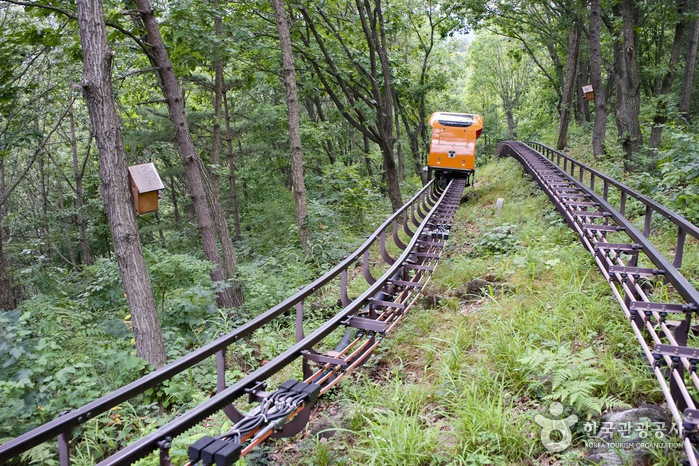
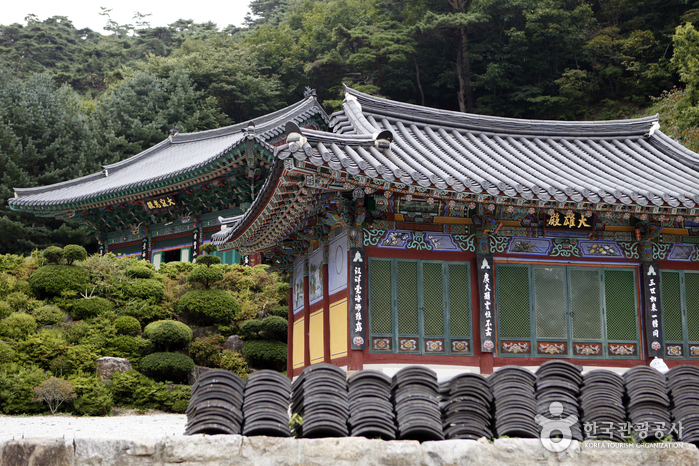

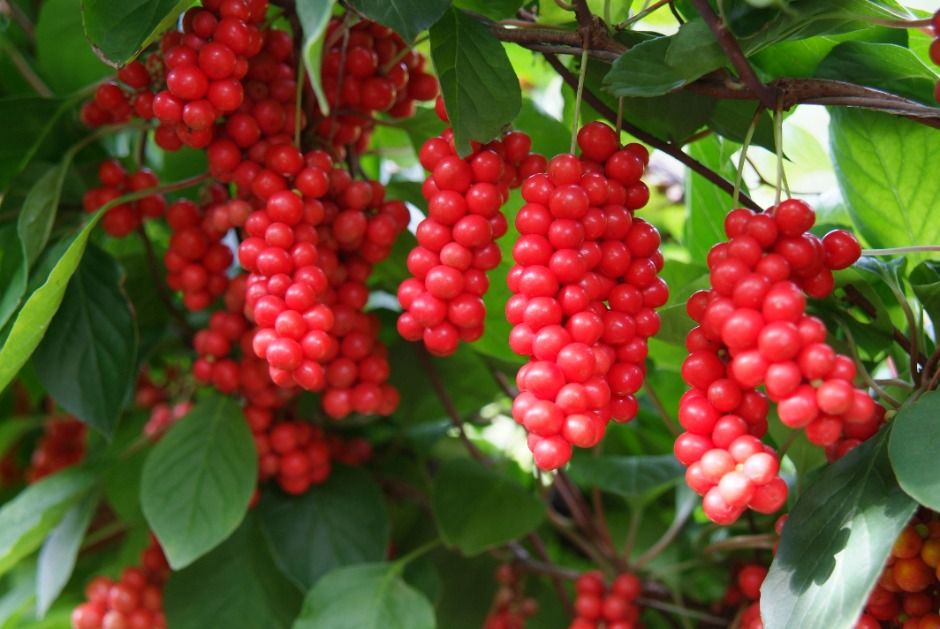
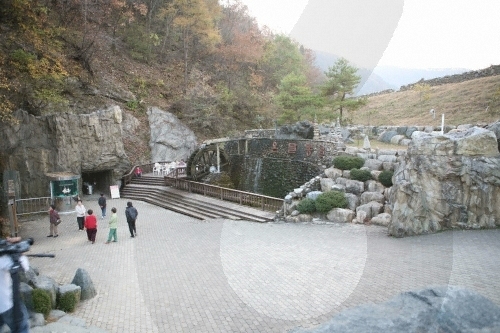
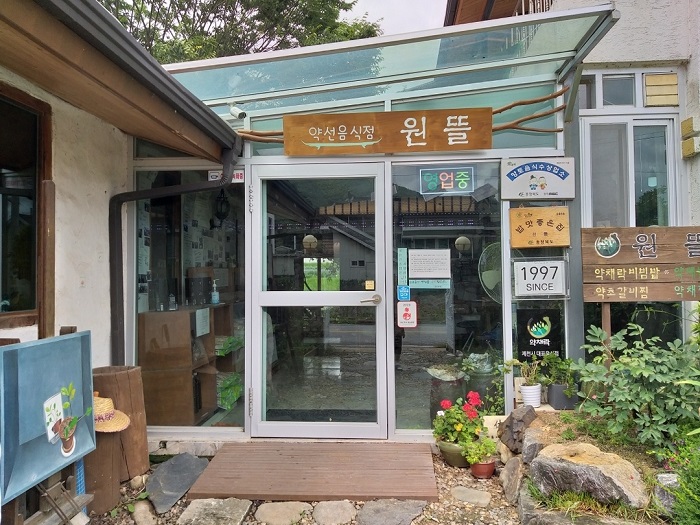
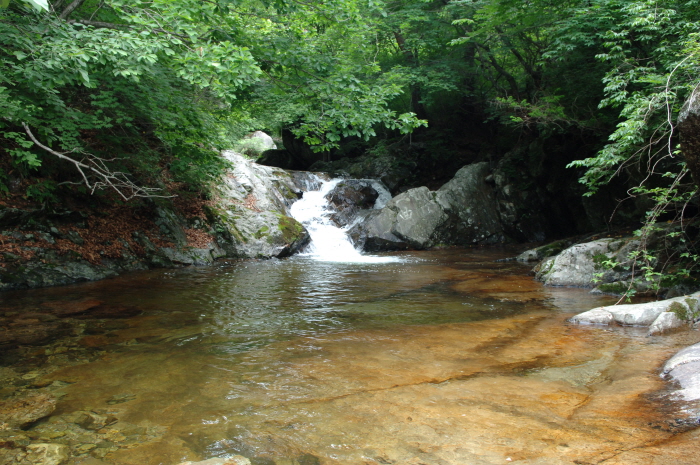
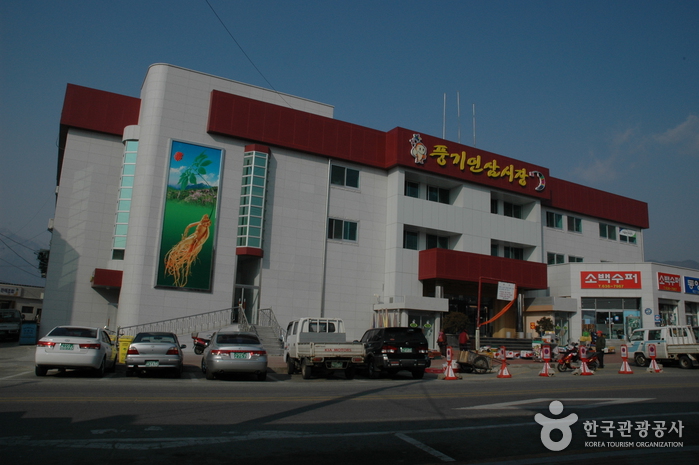
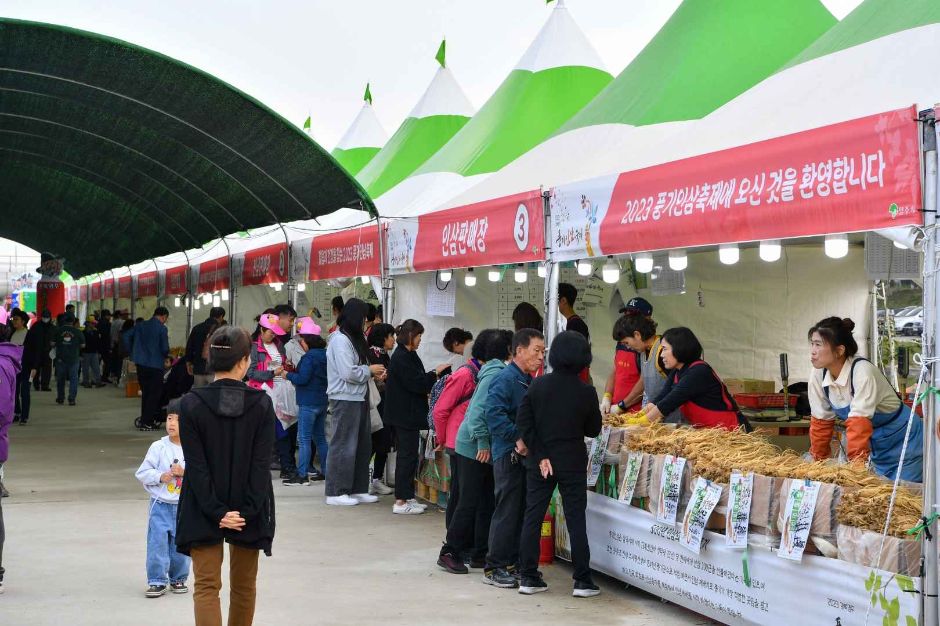
 English
English
 한국어
한국어 日本語
日本語 中文(简体)
中文(简体) Deutsch
Deutsch Français
Français Español
Español Русский
Русский